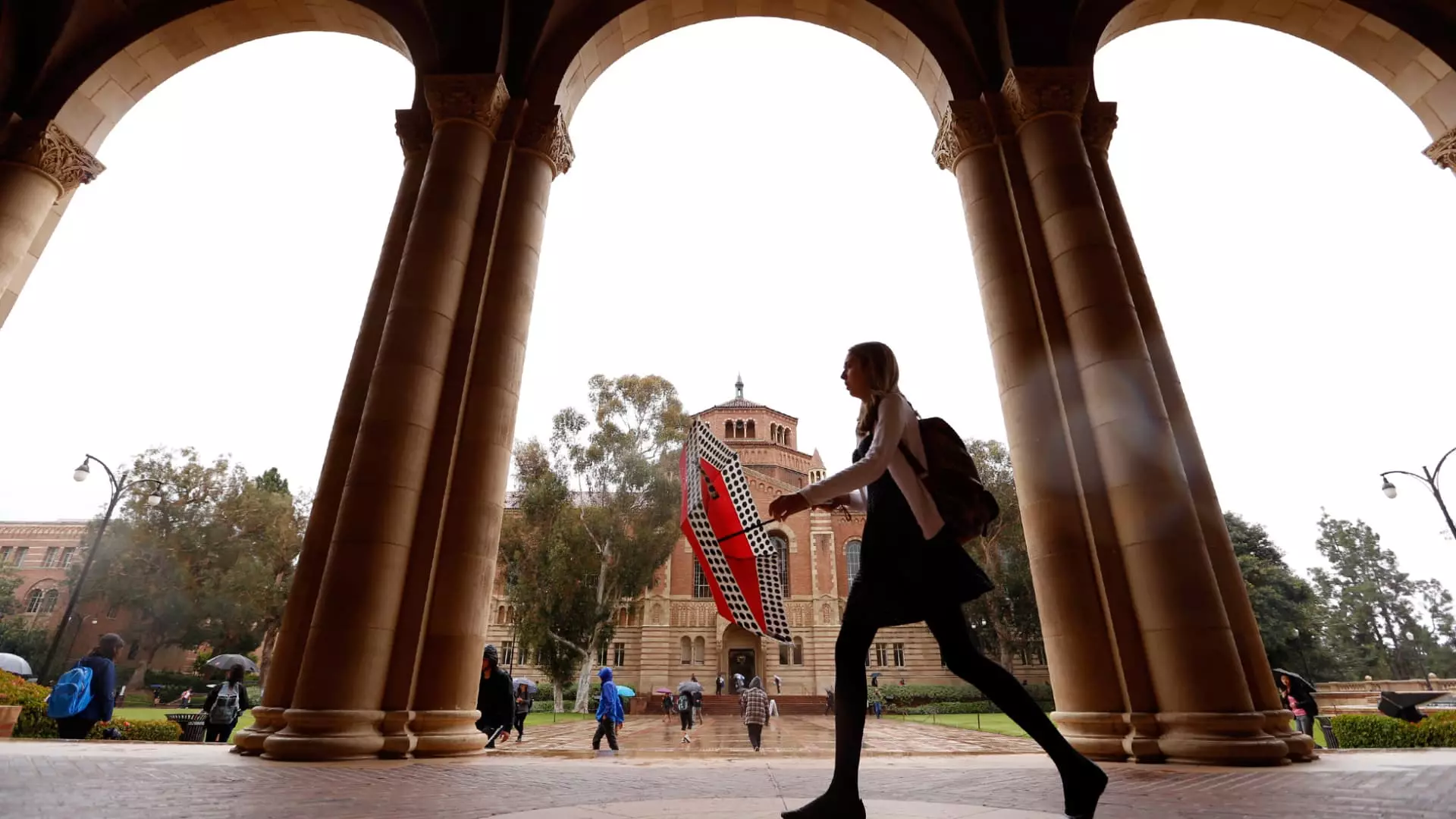As the landscape of higher education continues to evolve, a paradox emerges: while more students are eligible for federal financial aid than ever before, fewer high school graduates are opting for a traditional four-year college education. Studies have highlighted a troubling trend where college is increasingly perceived as accessible only to those who can afford its rising costs. This article delves into the statistics behind enrollment drops among freshmen, the impact of financial aid mechanisms, and the shifting attitudes toward higher education.
The National Student Clearinghouse Research Center recently reported a concerning 5% overall decrease in new first-year college students compared to the previous year. This marks the first downturn since the onset of the COVID-19 pandemic. Doug Shapiro, the Center’s executive director, expressed alarm at this decline, pointing to its significance during a time when educational engagement was expected to rebound following pandemic disruptions.
While undergraduate enrollment has seen an uptick due to returning students and those enrolled in community colleges, the most substantial losses are concentrated in four-year institutions. Notably, colleges that cater to low-income students witnessed an alarming drop exceeding 10% in first-year enrollment. Such disparities raise questions about the accessibility and perceived return on investment for a four-year degree, particularly among marginalized populations.
Despite improvements aimed at broadening access to financial support, the realities of the college funding landscape remain complex. The Free Application for Federal Student Aid (FAFSA), designed to simplify the aid process, has been subject to criticism. Although the reform aimed at increasing the number of Pell Grant recipients—which provide need-based aid to low- and middle-income students—problems persist that hinder student applications.
Recent data indicates that while more students are on track to qualify for Pell Grants—10% more this year, including a 3% increase among current high school seniors—the total number of recipients has actually decreased significantly over the past decade. From a peak of 9.4 million recipients in 2011-12, this number has dropped by 32%, leaving only 6.4 million students receiving grants in the 2023-24 cycle. This paradox emphasizes a disconnection between eligibility and actual enrollment in four-year institutions.
The financial landscape for higher education continues to shift, with rising tuition often outpacing the increases in financial aid. The maximum Pell Grant award has increased by only $500 for the 2023-24 academic year, now totaling $7,395. In stark contrast, the costs for a private college reached an average of $58,600, with public, in-state institutions averaging $24,920. This widening gap between educational costs and available financial aid fuels student skepticism about pursuing a degree, as prospective students weigh the risks against potential debt versus future earnings.
The increasing financial burden of higher education fosters apprehension among current and prospective students, evidenced by the choices made by a significant portion of high school graduates. A recent survey revealed that rising costs led 12% of college applicants to reject a four-year education in favor of community colleges or technical training, highlighting a growing trend in which short-term accreditations are seen as more viable alternatives.
This financial strain and uncertainty have fostered an evolving mindset regarding the value of a traditional college degree. Jamie Beaton, co-founder and CEO of the college consulting firm Crimson Education, notes a shift toward skepticism concerning the return on investment associated with obtaining a degree. Students are increasingly questioning whether the costs align with the anticipated benefits, leading many to consider the rapid growth of shorter-term certification programs.
The National Student Clearinghouse Research Center reports a 7.3% increase in enrollment in certificate programs, as students seek to acquire skills that are directly applicable to the job market without incurring substantial debt. This trend reflects a broader cultural shift prioritizing practical skills over traditional academic pathways, potentially reshaping the future of higher education.
The current dynamics in higher education paint a nuanced picture where eligibility for financial aid does not guarantee access or enrollment. The steep costs associated with four-year degrees combined with changing student attitudes towards education compel a critical reassessment of traditional pathways to success. As enrollment in alternative education models grows, stakeholders in higher education must address these trends to ensure that quality education remains accessible to all, fostering an inclusive environment where varied pathways to career success are celebrated.

